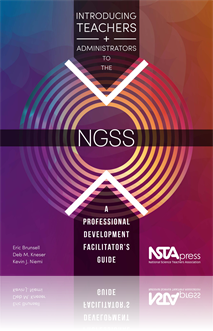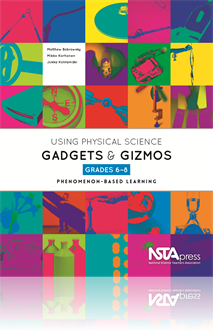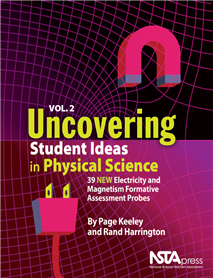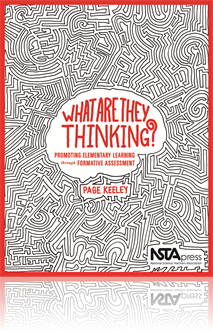All Book Chapters
Book Chapter
Fostering Discussion About Curricular Decisions
This chapter focuses on beginning discussions related to curricular decisions including course mapping, designing essential questions and performance assessments, and using the Next Generation Science Standards (NGSS) to plan units of instruction. Th...
Book Chapter
Connecting NGSS and the Common Core State Standards
This chapter introduces educators to the connections between the Next Generation Science Standards (NGSS) and the Common Core State Standards (CCSS) in both mathematics and English language arts. The activities provided here will allow participants t...
Book Chapter
Lab 12. Explanations for Animal Behavior: Why Do Great White Sharks Travel Over Long Distances?
The purpose of this lab is to introduce students to many of the theories and concepts used by biologists to study and explain the behavior of animals....
Book Chapter
Sound is one example of wave motion and the ability to hear sound is based on the principle of resonance. In this chapter’s activities, you will learn about standing waves, resonance, and an interesting wave phenomenon known as the Doppler effect. ...
Book Chapter
Color theory is the aspect of physics that can explain the colors on your computer screen or in your printer. Visible light can be split into different wavelength regions that are called colors. The color of an object is usually the color that the su...
Book Chapter
Thermodynamics is a very important part of physical science. When discussing thermodynamics, we can explore heat, thermal expansion, and insulation, as well as changes in state, thermal equilibrium, and thermal energy. In this chapter, the experiment...
Book Chapter
Water can be used to help become familiar with the concepts of density and buoyancy. For example, lifting rocks from the bottom of a lake is easier than moving them on the beach. While in the water, the buoyant force makes the rocks feel lighter. In ...
Book Chapter
In order to discuss mechanical interactions, we need to understand forces and motion. In physical science, we can make use of all three of Newton’s laws of motion in a variety of situations. Energy analysis encompasses all areas of physics. In mech...
Book Chapter
This chapter features gadgets and gizmos that make science look like magic. You don’t have to be a magician to perform these tricks—all you need is physics. Each student can pick a gizmo and prepare a performance for the rest of the group. Rememb...
Book Chapter
The purpose of this assessment probe is to elicit students’ ideas about series circuits. The probe is designed to determine what students think will happen to the brightness of light bulbs as more light bulbs are added to a circuit. This free sampl...
Book Chapter
Two-dimensional (2D) motion means motion that takes place in two different directions (or coordinates) at the same time. The simplest motion would be an object moving linearly in one dimension. An example of linear movement would be a car moving alon...
Book Chapter
Students have early childhood experiences with basic force concepts well before they encounter the word force in the science classroom. For example, it doesn’t take long for a child to figure out that pushing or pulling on a toy will cause it to mo...
Book Chapter
The purpose of this assessment probe is to elicit students’ ideas about electric forces. It is designed to reveal whether students recognize that electric forces can act at a distance without direct contact. The probe is best used with elementary s...
Book Chapter
The purpose of this assessment probe is to elicit students’ ideas about electric charge when they rub balloons on their hair. It is designed to reveal whether students recognize that objects charged in the same way repel each other. The probe is be...
Book Chapter
Can It Be Electrically Charged?
The purpose of this assessment probe is to elicit students’ ideas about electric charge. It is designed to reveal students’ thinking about the types of materials that can be electrically charged so it’s not important that they know which types ...







